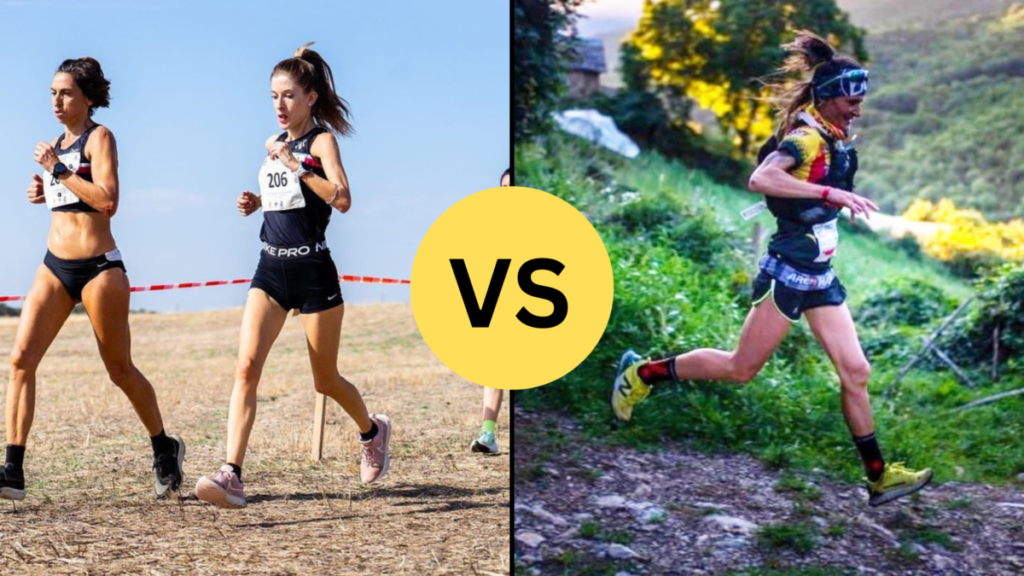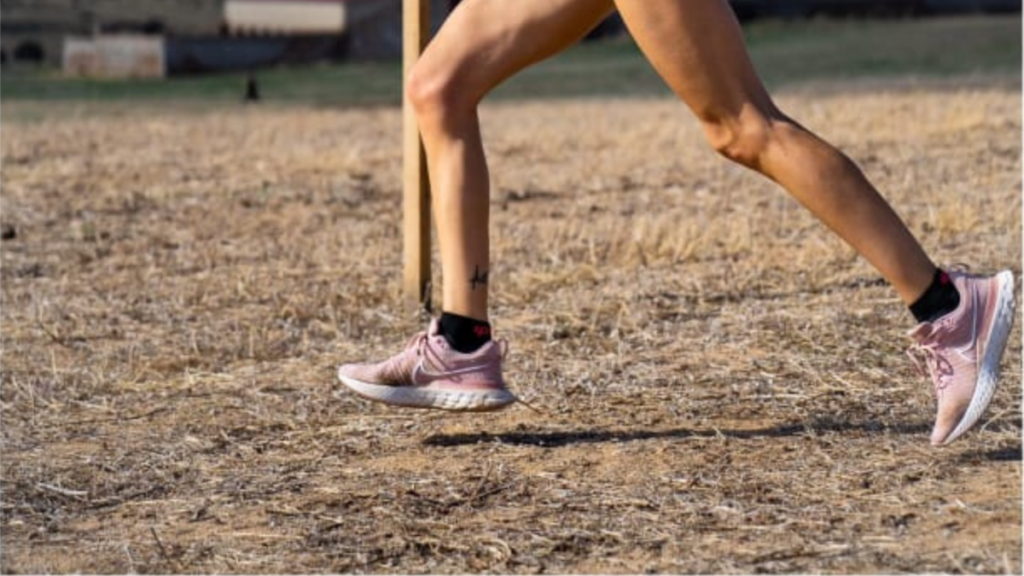
When I was in high school I ran competitive cross-country. Having had the experience of running cross-country meant that I did not feel as intimidated as other runners at the prospect of taking up trail running. Doing both trail running and cross-country has helped me understand the ways in which they are different.
Cross-country is raced over shorter distances than trail running events. Most cross-country events are 8 miles long, or shorter. Trail running events are nearly always longer than 10 miles. The 50-mile and 100-mile distances are very popular. Cross-country is also run on much less technical surfaces.
Let’s take a closer look at all of the ways that cross-country differs from trail running as well as a couple of areas where these two forms of off-road running overlap each other.
What Is The Difference Between Trail Running And Cross Country
The essential differences between cross-country and trail running hinge on both distance and how technically demanding the route is. Most of the time a cross-country race will be either 3 miles (5km) or 5 miles (8km) at the junior level, and roughly double those distances at the senior level.
I have competed in short trail runs such as the 6-mile run leg of an XTERRA triathlon as well as some trail races that are about 10 miles long. The distances at which trail running events are the Ultra events of 50k, 50-mile, 100k, 100-mile, and in some cases even further. The finishing times of ultra-trail races are often measured in days/hours rather than the minutes/seconds that define cross-country races.

When it comes to the technical aspect of the two types of events, Cross-country events are raced on circuits that are mostly grass and wide enough for easy passing. Trail running events are nearly always run on mountain trails that are often single-track, making it more difficult to overtake. Trail runners need to contend with rocks and tree roots on the trail and be careful not to trip. Cross-country runners don’t need to be as concerned about tripping, they need to have explosive speed out of the tight corners to be able to stay in contention at the front of the race.
What Are The Similarities Between Trail Running And Cross Country Running
The key similarity between trail running and cross-country is that both events avoid paved surfaces as much as they possibly can. Both cross-country and trail running create a feeling of being in nature which is lacking when you run on the road.
When I raced cross-country in high school, our races would start at a school or sports center that was near a park or a section of gravel track in a forest. Our event would begin and end with a loop on the grass sports field and then have a few hundred yards of paved area that would get us to the park or forest for the main part of our race.
In many of the trail races I have done, we also had a short distance of paced road that got us from the start to the beginning of the mountain trail. Many of the nature parks where we ran had paved roads that we needed to cross to get from one single track to the next.
Is Trail Running Harder Than Cross-Country
On the whole, I would say that trail running is harder than cross-country. Although when I raced cross-country it never felt easy running flat-out for 30 to 40 minutes.
Even though the trail running I do is at a much slower pace than I ran cross-country, the sheer distance and technical difficulties of the trail make it more taxing on my body from an endurance perspective.
I am glad that I did compete in cross-country when I was young as it made it easier for me to embrace trail running as a got older. Many of my friends who have only run on paved roads are hesitant to try trail running as they fear the technical aspect and worry about tripping and falling.
What do trail runners wear?
When it comes to my clothing choice when I am out on the trail, I will opt for synthetic fabrics for their moisture-wicking ability. If the weather is slightly chilly I’ll layer that with a merino wool top that is also moisture-wicking. My socks are also either synthetic or merino wool for the same reason. I learned the hard way how damp/wet socks cause chafing and blisters.
Because I carry a hydration pack when I trail run, there is space for me to pack a lightweight rain shell that can double as a windbreaker if the weather turns on me.
My head will always be covered, either with a cap/hat for the sun or a beanie if I’m running in cold wintry conditions.
I wear trail running shoes that are well-cushioned to protect my feet from sharp stones and protect my joints.
What Should I Wear For Cross Country Running?
The outfit that I wore when running cross-country was identical to what I wore racing middle-distance on the track. That consisted of a lightweight vest, shorts, socks, and shoes.
When I raced cross-country, Nike had just launched their first “Waffle” cross-country shoe. It was lightweight and flat, with no cushioning. It felt and performed like the running spikes that I used on the track. The difference with the Waffle was that it didn’t have metal spikes, but rather short rubber lugs for gripping grass, sand, and mud.

Nike still produces the Waffle-2 racing flat that is nearly identical to the shoes I raced cross country in during the 1980s. Here is a pair available on Amazon.
The lugs on my cross-country shoes looked like a waffle iron and performed the same way as the lugs on my trail shoes do today. Having rubber lugs as opposed to metal spikes meant that we could easily negotiate any short paved areas that were on the cross-country circuits.
Can Trail Running Shoes Be Used For Cross Country?
A pair of good trail running shoes that are both lightweight and have plenty of traction/grip will easily be suitable for nearly all cross-country courses. On some very soft grass/mud courses wearing spikes will give extra grip and allow faster acceleration. Most often the rubber lugs that you find on trail running shoes will be adequate.
Last weekend, my friend Yolanda raced her first-ever cross-country race. She has never done any trail running, so she doesn’t own any trail running or cross-country shoes. All she had was her pair of road shoes with their minimal grip. She was worried about how she would do without grippy shoes.

Luckily for her, the area where she was racing had experienced one of their driest summers and the first autumn rainstorm hadn’t yet arrived. The surface was dry grass and hard-pack earth beneath it. Her road shoes held up well, though she did lose a few seconds in the sprint off the start line. Her overall speed and endurance meant that she could easily make up the seconds she lost over the course of the 6-mile race.
To learn more about how effective trail running shoes can be, read the article that I wrote here on Trail Run Planet called Do Trail Running Shoes Make A Difference?
